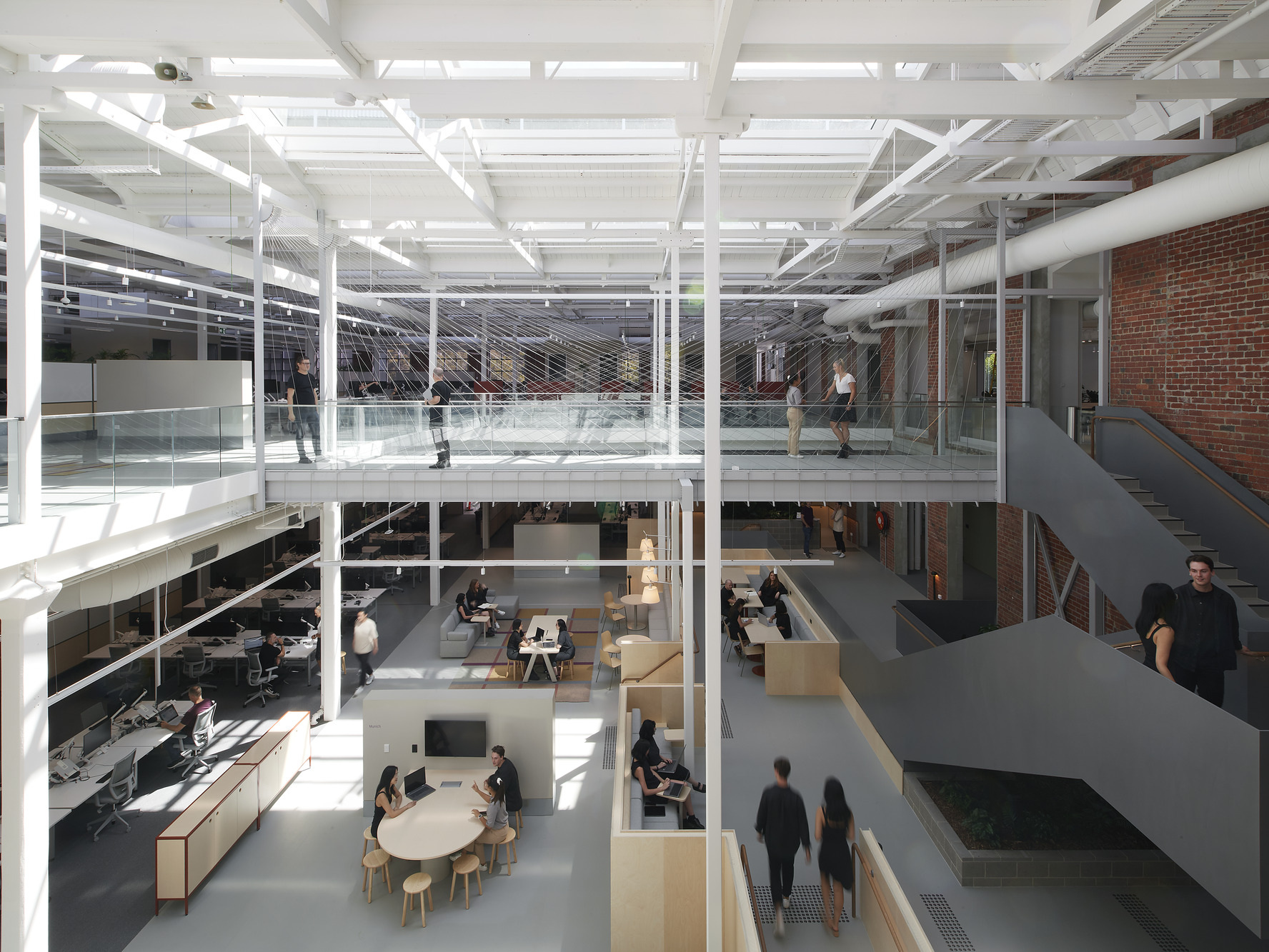Our first workplace designed during the pandemic for a post covid workforce

Reimagining the Melbourne headquarters of financial IT company Computershare, we’ve flipped the company’s previous workplace model to re-engage its people in a post-covid world.
Social spaces and flexibility were prioritised to enable Computershare to support a structural business change and a post-covid demand for a more adaptable and fluid workplace. To do this, we flipped the company’s traditional workplace model of two thirds of space being used for individual work, to two thirds of space designated for collaboration and social connection.
“Underpinning the design is the desire for the Melbourne team to learn, connect and collaborate,” says Evodia Alaterou, Workplace Design Strategy Leader and Principal, Hassell.
“As the global headquarters of Computershare, there is a strong emotional connection to the site and we honed in on the company’s aim to reconnect with this by creating an amazing place that their people want to be in, love coming to and working in.”
Computershare’s Melbourne office is housed within the city’s historic Yarra Falls Spinning Mills and connects with the former industrial suburb of Abbotsford, as well as with the banks of the Yarra River, according to the company.
“Our Melbourne location plays a special role in the history of Computershare, which has grown from a small start-up to a global organisation across 21 countries.
“It is the place where a lot of employee innovation, tenacity and creative thinking, so crucial to our global success, happened.
“We wanted our history, heritage and location to help re-define the office as a global centre for inspiration and creativity within the company for years to come,” says Mark McDougall, Global Chief Information Officer at Computershare.
Integrating the large and previously very dark wool mill and an existing 1980s building, the new three level, 7,000 m² workplace is imbued with natural light which is filtered throughout the building via a large central skylight. Distinct zones, each with its own identity and function are unified by a central social space designed for connection and drop in working.
“A central 14-metre-long steel bridge acts as a connecting device between the social heart and the work areas, mirroring the bridges in the surrounding parkland that connect social space with the surrounding urban environment.
“Symbolically, it also connects with history and place, with the form drawn from the weaving processes of the mill,” says Dan Cox, Principal, Hassell.
With a “loose fit” approach, most of the settings are furniture based to enable high adaptability and flexibility. Throughout the design, furniture which was locally designed and manufactured was used including Derlot Editions, Caon and Didier. The internal materiality references typically external materials such as concrete paving, ply and blockwork, reflecting the surrounding external parkland and its urban location and context.